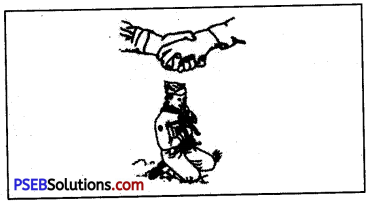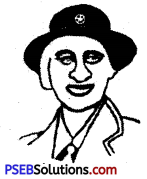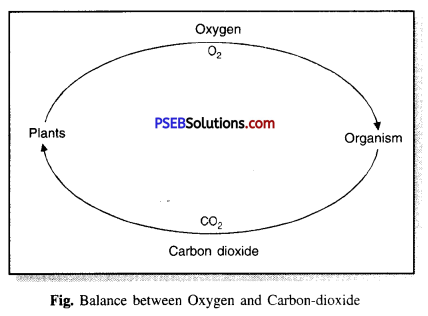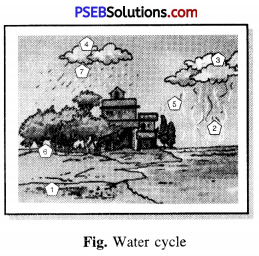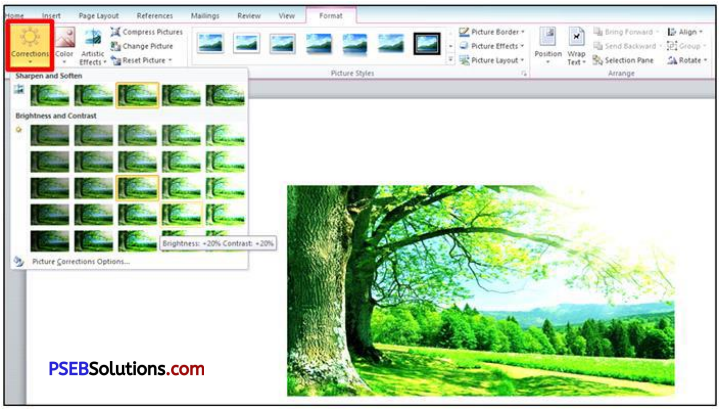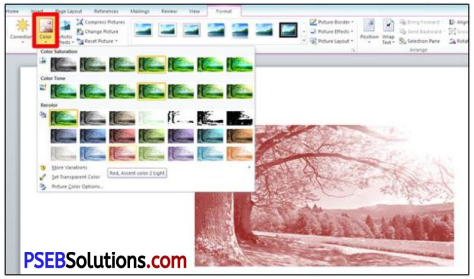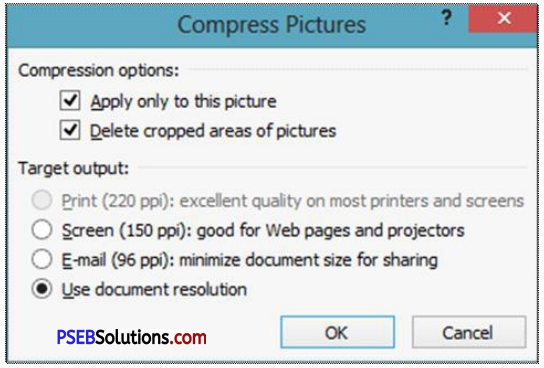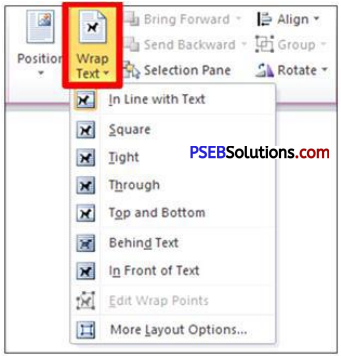Punjab State Board PSEB 7th Class Social Science Book Solutions Civics Chapter 18 Democracy and Equality Textbook Exercise Questions and Answers.
PSEB Solutions for Class 7 Social Science Civics Chapter 18 Democracy and Equality
SST Guide for Class 7 PSEB Democracy and Equality Textbook Questions and Answers
I. Answer the following questions in 1-15 words.
Question 1.
What do you understand by democracy?
Answer:
In a democracy, the government belongs to the people, the government runs according to the will of the people. The rule of law prevails in this system. The rights and duties of each and everybody are well defined. The govt, works for the welfare of the people. Abraham Lincoln says, “It is the govt, of the people, for the people and by the people.”
Question 2.
What do you know about the ‘Rule of Law’?
Answer:
It means there are predetermined laws and by-laws which cannot be violated. The government runs according to these rules and these are written in the Constitution of India. The Constitution can be amended by a majority of people’s representatives. The government derives its powers from the Constitution.
Question 3.
What is the importance of Universal Adult Franchise?
Answer:
Modem democracy is the representative democracy, also known as indirect democracy. The citizens elect their representatives, who run the government and make laws. These are elected through voting. If the government is incapable then it can be changed through the right to franchise. So this right plays a great role in modem democracy.
Question 4.
What is the importance of public opinion in democracy?
Answer:
Public opinion means the will of the people. The policies are formulated on the basis of public opinion. If the government chooses to ignore the public opinion, it loses the general elections and is easily changed.
![]()
Question 5.
In which country there is still ‘Direct Democracy’?
Answer:
In this system, all citizens directly participate in the law making process, as well as government making process. When the population increases, such kind of democracy becomes very difficult to adopt. Still, in Switzerland, there is the existence of direct democracy.
II. Answer the following questions in 50-60 words :
Question 1.
Write short note on the emergence of democracy.
Answer:
The beginning of democracy was in Athens, city of Ancient Greece. The democracy there is almost 2500 years old. It is said that in Athens, the general public would hold meetings many times in a year. Here, the decisions were taken directly by the people for running the administration. Such democracy is known as direct democracy. At that time it was possible because the population was less and people could gather at one place and take decisions. Direct democracy was possible also because the women, the foreigners and the slaves had no right to participate in the administration. But today direct democracy is not possible.
Question 2.
Where and when democracy emerged?
Answer:
First of all, it was established in Greece in Athens city. The democracy there is almost 2500 years old. The people of Athens would gather many times in a single year and hold meetings. In these meetings they would take decisions about how to run the management of the state.
![]()
Question 3.
Write name of four types of democracy on the basis of classification.
Answer:
1. Presidential type of Government: In this, the President is directly elected by the people. He is the real ruler of the state. So, the President and the ministers are not from a single political party. Such type of presidential form of government is in America. The President here is more powerful than the Indian President.
2. Parliamentary type of Government: In this, the Parliament is the most powerful organ. The President is just for the name only. The real power is in the hands of Prime Minister. All members of the council of ministers are taken from the Parliament or legislatures. So, there remains a co-ordination between legislatures and executives.
3. Unitary type of Government: In it, there is division of powers between the state and the centre. But centre is more powerful than the states. The Indian Constitution is federal in nature. But in times of emergency, the powers of central government increase.
4. Federal Government: Here the Constitution is written and rigid. There is division of power among centre and the states. Every state has its own government. In India also, there is federal government.
Question 4.
Write about any two features of the Democracy.
Answer:
1. Enlightened Citizens: In democracy, all the citizens are aware about their rights and duties. They are matured enough to run the administration efficiently.
2. Matured Leadership: Leaders in democracy are also mature because matured leaders are very much necessary to run democratic system efficiently.
Question 5.
Write your views about Economic and Social Equality.
Answer:
1. Social equality: It means all people are equal in society. Nobody can be discriminated on the basis of place of birth, colour of skin, religion, caste and sex. All people are useful organs of the society. No person can be given special status.
2. Economic Equality: It means there should be no difference between the rich and the poor. No class of the society should be exploited. It also means that means of production should not be limited in the hands of a few people. All should have equal opportunities of earning employment.
![]()
Question 6.
Why democracy is the most popular form of government in modern times?
Answer:
Today most countries in the world have democratic governments. Such government is welfare-oriented and gives special importance to human rights and freedom. All are treated as equal in the eyes of law. The following are the main features that make democracy very popular :
1. Equality: There is no rich, poor, religious or caste division in democracy. All are equal in the eyes of law.
2. Freedom: People are free from every aspect. They can do any business, can live in any area, can express their ideas freely. But in dictatorship, people have to abide by the ruling of the dictator.
3. The process of making decisions: The decision-making process is in the hands of the people. People choose their representatives and send them to legislatures. The majority party makes the government and runs the administration. The govt, works as per the wishes of general public. If the government does not work properly then it can be changed.
4. Active participation by citizens: All electorates can fight elections or cast then- votes according to their wishes. All are equal participants in the administration of the government but in dictatorship it does not happen.
5. To remove altercations: The ideas of others are respected. Nobody is compelled to adopt anything. The ruling party considers the suggestions of opposition parties as important and the opposition party also co-operates with the ruling party. So, ideological differences are cleared amicably.
6. Growth of human dignity: Freedom, equality and fraternity are the main principles of democracy. Here there is political, social as well as economic freedom and equality. The right to employment is available to everybody. The economically weaker sections of the society are given reservations in jobs. So, these steps increase the human dignity.
III. Fill in the blanks :
Question 1.
In India head of the country is elected for a fixed time (five years) because of this India is called ______
Answer:
Democratic Republic
Question 2.
The nominal executive head of Central Govt, is and heads of State Govt’s are ______
Answer:
President, Governors
Question 3.
Democracy originated in city of ______
Answer:
Athens
![]()
Question 4.
______ is the country where there is Direct Democracy.
Answer:
Switzerland
Question 5.
The basic principle of Democracy is ______ and ______
Answer:
Rule of law, Accountability.
IV. True/False :
Question 1.
India is a democratic Republic.
Answer:
True
Question 2.
Switzerland is the only country where there is Direct Democracy.
Answer:
True
Question 3.
To cast vote is a Universal Adult Franchise to only some persons.
Answer:
False.
Question 4.
In a Democratic country Rule of Law prevails.
Answer:
True
![]()
Question 5.
Modern Democracy has emerged firstly in France.
Answer:
False.
V. Multiple Choice Questions :
Question 1.
Democracy is a government , “of the people, by the people and for the people.” Who spoke these words.
(a) Abrahim Lincoln
(b) Laski
(c) David Fasten.
Answer:
(a) Abrahim Lincoln.
Question 2.
Which is the most popular form of government in modern times?
(a) Dictatorship
(b) Democracy
(c) Military Rule.
Answer:
(b) Democracy
![]()
Question 3.
How many types of heads of state in parliamentary democratic countries?
(a) Four
(6) Five
(c) Two.
Answer:
(c) Two.
VI. Activities:
Question 1.
Prepare a list of 10 Democratic Countries.
Answer:
Do it yourself.
Question 2.
Discuss about the success of Indian Democracy with your teacher.
Answer:
Do it yourself.
PSEB 7th Class Social Science Guide Democracy and Equality Important Questions and Answers
Multiple Choice Questions
Question 1.
India is a ______ country.
(a) Democratic
(b) Monarchical
(c) Dictatorship
(d) None of these.
Answer:
(a) Democratic.
![]()
Question 2.
In a democracy, power lies in the hands of the
(a) Government
(6) People
(c) Leaders
(d) President.
Answer:
(b) People.
Question 3.
Democracy exists :
(а) In 70 Countries
(б) In Europe only
(c) In the majority countries of the world
(d) In the whole world.
Answer:
(c) In the majority countries of the world.
Question 4.
Which of these is a feature of democracy?
(а) Franchise based on property, qualification
(b) Franchise based on educational qualification
(c) Landlords are the voters
(d) Universal Adult Franchise.
Answer:
(d) Universal Adult Franchise.
![]()
Question 5.
In ______ democracy, public itself manages the administration.
(a) Direct
(b) Indirect
(c) Referendum
(d) Monarchical.
Answer:
(a) Direct.
Question 6.
______ is more important in democracy.
(a) Election
(b) Referendum
(c) Franchise based on property
(d) None of these.
Answer:
(a) Election.
Question 7.
______ is the real executive of government.
(a) President
(b) Prime Minister
(c) Parliament
(d) People.
Answer:
(a) President.
Short Answer Type Questions
Question 1.
Write two features of democracy.
Answer:
- The administration is in the hands of people.
- The policy decisions are taken according to the wishes of the public.
Question 2.
Write the types of democracy.
Answer:
- Direct Democracy.
- Indirect or Representative Democracy.
Question 3.
What is the difference between direct and indirect democracies?
Answer:
In direct democracies, people themselves take decisions. But in Indirect democracies, people take decisions through their elected representatives.
![]()
Question 4.
Write the names of chiefs of the country in a democratic setup.
Answer:
The are two types of chiefs given ahead :
- The real chief,
- Chief in name only or Nominal Chief.
Like in our country, chief in name is President of the country and Governors of the states. And the real chief is Prime Minister of the country and Chief Minister of the state.
Question 5.
What do you mean by Republic?
Answer:
Where the head of the state is elected by the people it is called republic.
Question 6.
Why do we call India a democratic republic?
Answer:
Because in India, the head of the state is elected by people.
Question 7.
What is democratic monarchy?
Answer:
Here the head of the state, is queen or king, which is an inherited status not an elected one. In England such type of democracy exists.
![]()
Question 8.
Write the basic principle of democracy.
Answer:
The basic principle of democracy is based upon right of equahty and freedom.
Question 9.
What is Universal Adult Franchise?
Answer:
Where all adults have the right to vote without any discrimination.
Question 10.
Write the types of democratic government on the basis of legislature and executive.
Answer:
- Presidential form
- Parliamentary form.
Question 11.
Write the types of democratic government on the basis of division of powers.
Answer:
Centralised government, federal government.
Question 12.
“Democracy is not just a type but a life in experiment.” Explain.
Answer:
In democracy, there is no discrimination, no rich-poor divide, no female-male divide. Every person can develop his or her personality. Success is not granted on the basis of caste or place of birth. So, Democracy is not just a type of government but a life in experiment.
Question 13.
What do you mean by dictatorial government?
Answer:
The authority is in the hands of a single person or a few persons in such government. The elections are not conducted and the government is not run according to the will of general public. The power is concentrated in the hands of dictator. His word is law. The people have to work according to the will of the dictator.
![]()
Question 14.
Write about the emergence of the principle of equality.
Answer:
Freedom and equality are the bases of democracy. These beliefs developed due to the England revolution and French Revolution in 17th century and 18th century respectively. In the beginning, the right to vote was available only to rich people but because of the need of time, all adults were given the right to vote. This is called the Universal Adult Franchise. It is based on the law of equity.
In the 19th and 20th centuries, the equality right of democracy become more prominent. This right was limited earlier to the political area only. But now in economic and social areas, the right to equality is being emphasized. The people have been given many freedoms also. In this, freedom of expression is most important.
Question 15.
What do you mean by Parliamentary Democracy?
Answer:
The Parliamentary Democracy is considered the best government but there are certain conditions to make the democracy successful which are as follows :
1. Alert citizens: Public opinion is the basis of democracy. So, the citizens must be very alert. It means that the public should be politically mature. Only then they can keep a check on their representatives.
2. Capable leaders: If the government is run by educated leadership, the government will be capable. Only wise voters can elect such leadership.
3. Disciplined citizens and political parties: People need to be disciplined and only then they can criticize the wrong policies of the government and can compel the government to work properly. People must respect each other’s ideas. When the political ideology is different, different political parties come into existence. The representatives of the people are elected through elections. So, the political parties should also be very alert and disciplined.
4. Social and economic equality: There is no difference between the rich and poor. Democracy cannot succeed if there are differences in caste, religion, and language.
5. Tolerance: In a democracy, there is a rule of the majority. So, the ruling party must be tolerant. The opposition should also adopt the policy of tolerance which is a prominent feature of democracy.
